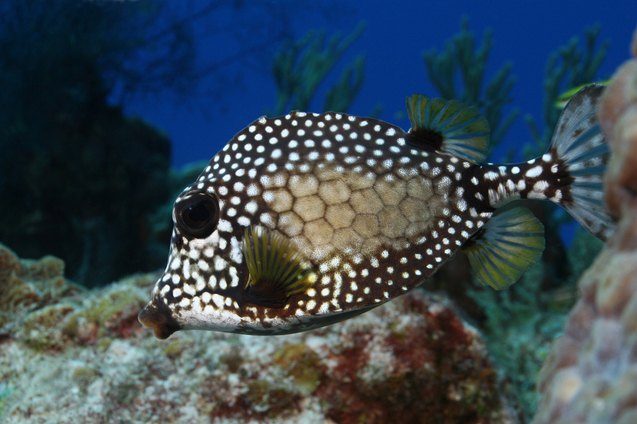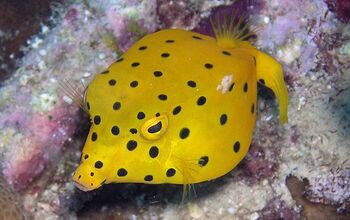Trunkfish


About Trunkfish
Trunkfish belong to the order Tetraodontiformes in the family Ostraciidae. This family contains myriad species of four main types of fish – boxfishes, cofferfishes, cowfishes, and trunkfishes. In many cases, the name trunkfish and boxfish is used interchangeably. Most trunkfishes grow to an average length between 8 and 20 inches, though they tend to be smaller in captivity than in the wild. Trunkfishes generally do not tolerate other fish from the same family in their territory but they can be kept with non-aggressive species of similar size, as long as they are not aggressive feeders. What makes trunkfish unique is the fact that they secrete a poisonous material from their skin which acts as a chemical defense mechanism against predators.
Trunkfish secrete a poisonous material from their skin which acts as a chemical defense mechanism against predators.
Different species of trunkfish can be found around the world in the warmer regions of the Atlantic, Pacific, and Indian Oceans. The Lactophrys genus of trunkfishes which includes three species is native to the western Atlantic Ocean while
Trunkfish vary widely in terms of color and pattern from one species to another. Common colorations for trunkfishes include black, brown, white, gray, yellow, and red. Many trunkfish exhibit spots, splotches, or patches of color.
Many species of trunkfish inhabit coral reefs in tropical regions so they require warm water temperatures and reef-like decorations consisting of hardy corals and live rock. Because trunkfish feed on very small invertebrates, crustaceans, and worms they need sandy substrate that they can sift through. In terms of water conditions, these fish prefer warm temperatures in the 72°F to 78°F range with a slightly alkaline pH range between 8.1 and 8.4 is ideal with moderate hardness between 8 and 12 dKH.
Trunkfishes vary widely in terms of color and pattern from one species to another.
Trunkfishes are omnivorous feeders, eating a diet that consists primarily of small invertebrates, crustaceans, and worms in the wild. In the home aquarium, trunkfish should be offered a mixed diet of chopped meaty foods and herbivore foods.
Also read: Setting a Schedule for Routine Tank Maintenance
There is little information available regarding the breeding habits of trunkfishes since they have not been successfully bred in captivity with any regularity.
There are about 23 different species belonging to the Ostraciidae family divided over 6 genera. Some of the most common species of trunkfishes seen in the aquarium trade include the following:
- Spotted Trunkfishes (Lactophrys bicaudalis)
- Buffalo Trunkfishes (Lactophrys trigonus)
- Smooth Trunkfishes (Lactophrys triqueter)
- Bluetail Trunkfishes (Ostracion cyanurus)
- Roughskin Trunkfishes (Ostracion trachys)
Photo credit: Brian Lasenby/Bigstock; DJMattaar/Bigstock

Kate Barrington is the loving owner of two cats (Bagel and Munchkin) and a noisy herd of guinea pigs. Having grown up with golden retrievers, Kate has a great deal of experience with dogs but labels herself a lover of all pets. Having received a Bachelor's degree in English, Kate has combined her love for pets and her passion for writing to create her own freelance writing business, specializing in the pet niche.
More by Kate Barrington
























